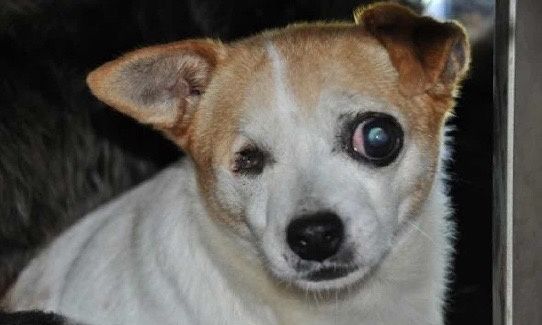

O_Lypa / iStock / Getty Images Plus
U.S. Department of Agriculture inspectors documented 60 percent fewer violations at facilities that use animals in 2018 compared to 2017. The drop, reported by the Washington Post this week and also documented by our researchers here at the Humane Society of the United States, is the latest sign that the federal agency is pulling back from its job of enforcing the Animal Welfare Act, which protects animals used by puppy mills, zoos and research labs, among others.
The Post also noted a drop in the number of “critical” or “direct” violations issued by the USDA — serious violations that would trigger faster follow-up by the agency and possible enforcement action. In 2017, inspectors recorded more than 4,000 citations, including 331 marked as critical or direct. In 2018, the number of citations fell below 1,800, including 128 that were critical or direct.
The agency now appears to be giving the facilities it inspects more leeway to cover up their deficiencies and their misdeeds. Above, a dog at a USDA-licensed puppy mill.USDA
HSUS researchers have come across instances where inspectors found animals who were clearly injured or emaciated, but did not write up a critical or direct citation or even require a puppy mill owner to take a sick dog to a veterinarian for an examination. For instance, in June last year, a USDA inspector visiting a commercial dog breeding operation in Kokomo, Indiana, came across a female boxer who was nursing a litter of puppies.
The dog’s ribs, spine and hip bones were protruding, but the inspector simply allowed the breeder to talk to a veterinarian on the phone, who instructed that the dog be given a different diet. The dog was not examined by a veterinarian in person and no tests were done to check if she was sick due to a non-dietary reason, like an underlying infection or parasite — an omission that could endanger her life and the lives of her puppies.
This slackening of enforcement commitments is just the latest in a long-running and disturbing saga that has unfolded at the USDA under the current administration. The agency now appears to be turning a blind eye to most violations while giving the facilities it inspects more leeway to cover up their deficiencies and their misdeeds.
Meanwhile, the public is being largely kept in the dark about what goes on behind closed doors at such facilities. In February of 2017, the agency deleted inspection reports of thousands of these facilities that groups like ours had relied on for years to inform the American public of how businesses treat the animals in their care. We are challenging that decision with a lawsuit, but to date, the USDA continues to redact breeder names, addresses and license numbers on its public Animal Welfare Act records.
In April 2018 the USDA announced a pilot program that alerts some facilities about upcoming inspections in advance. This gives some breeders and other regulated facilities time to cover up violations or even hide or destroy sick or injured dogs.
In May 2018, a new USDA tech note explained facilities can now “self-report” to avoid having certain violations identified in their records, even some critical violations, as long as they follow certain guidelines. That same month, the USDA issued a revised Animal Welfare Inspection Guide that was missing many important elements, such as the long-standing requirement that a facility’s written program of veterinary care be signed by an actual veterinarian, and requirements related to identifying suffering animals and taking sick animals to a veterinarian.
In October last year, the Post reported that the USDA issued only 39 written warnings in the first three quarters of 2018, and had settled only one civil complaint against a puppy mill operator. This was a huge drop from just two years before, when the agency issued 192 warnings and filed civil complaints against 23 licensees.
To make matters even worse, the recent government shutdown, the longest in American history, resulted in many puppy mills operating without an inspection during the early part of the year.
A USDA spokesperson admitted to the Post reporter that the agency is backpedaling on enforcement, stating that it is putting more emphasis on “working with” the regulated community instead. But this makes no sense because the USDA’s own audits show that this approach has failed in the past. In reality, the lack of enforcement is likely due to the influence of vested interests, including Big Ag groups and breeder collectives, which, under the current administration, have an unprecedented amount of influence on the agency’s strategy. It’s the fox in the henhouse.
Ironically, the only class of dealers that the USDA is increasingly cracking down on is animal rescues, especially nonprofit pet rescue transporters that obtain minor fees for moving dogs and cats from overburdened rural shelters to shelters that have more space. In 2018, the USDA updated the interpretation of its rules to require some pet rescues to obtain a license under certain circumstances, even if payment they receive to transport pets is just compensation for vet care or gas money.
We are keeping an eye on these developments and challenging them whenever possible, but we cannot do it without your help. Please contact your U.S. Representatives and ask them to join a member sign-on letter to the Agriculture Appropriations Subcommittee that will be circulating soon. The letter will shine a spotlight on these problems at the USDA and call for tougher enforcement. Also ask your Representatives to support the Welfare of Our Friends (WOOF) Act, H.R. 1002, in Congress.
This important bill would require the USDA to ensure that pet breeders demonstrate compliance with the Animal Welfare Act before their licenses can be renewed, and it would also prevent puppy mill operators whose licenses have been suspended or revoked from opening a new license in a different name.
- USDA Plans to Side With 'Fake Organic' Egg Producers, Ditch ...
- USDA Allows Animal Neglect and Abuse at Poultry Slaughter Plants ...

 233k
233k  41k
41k  Subscribe
Subscribe 
